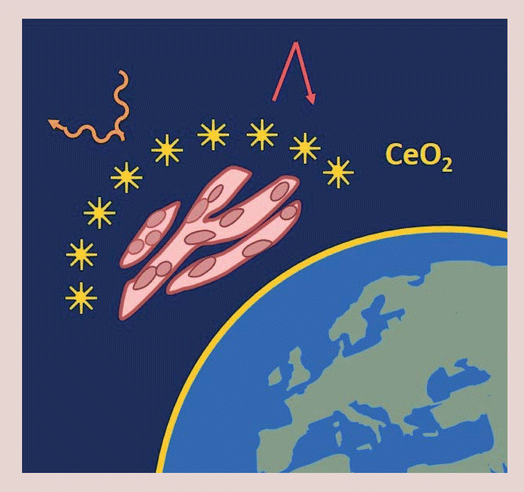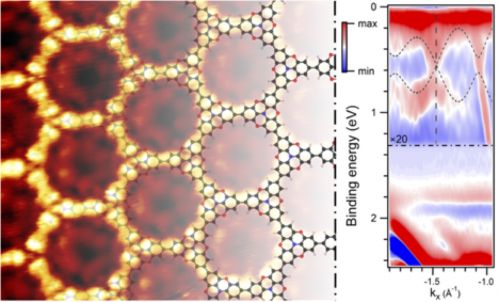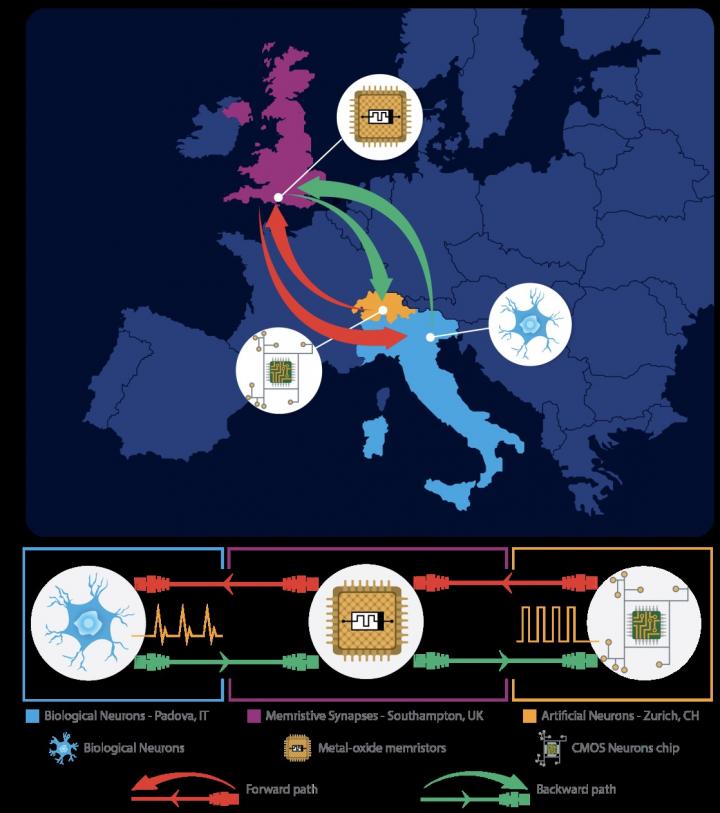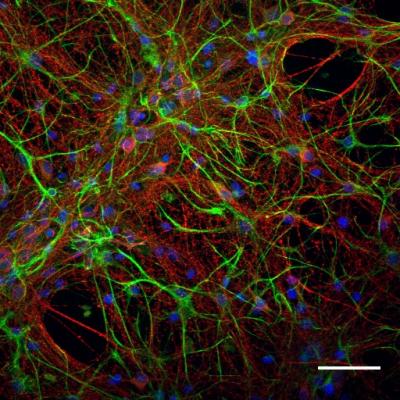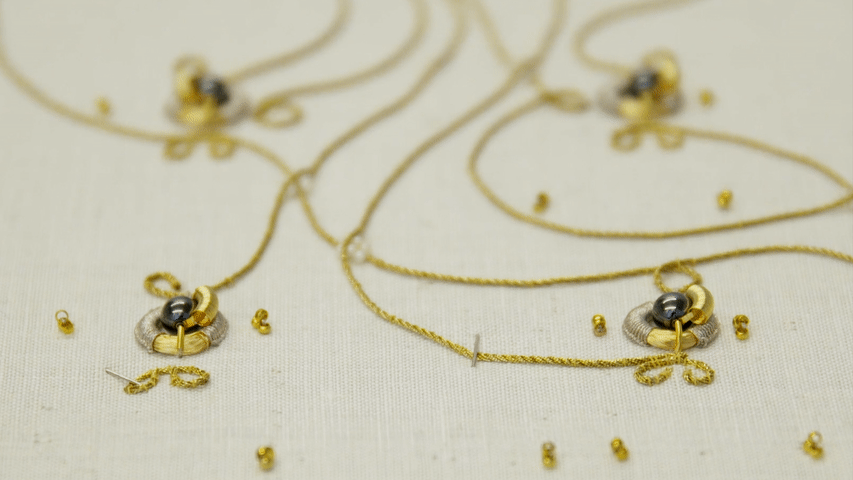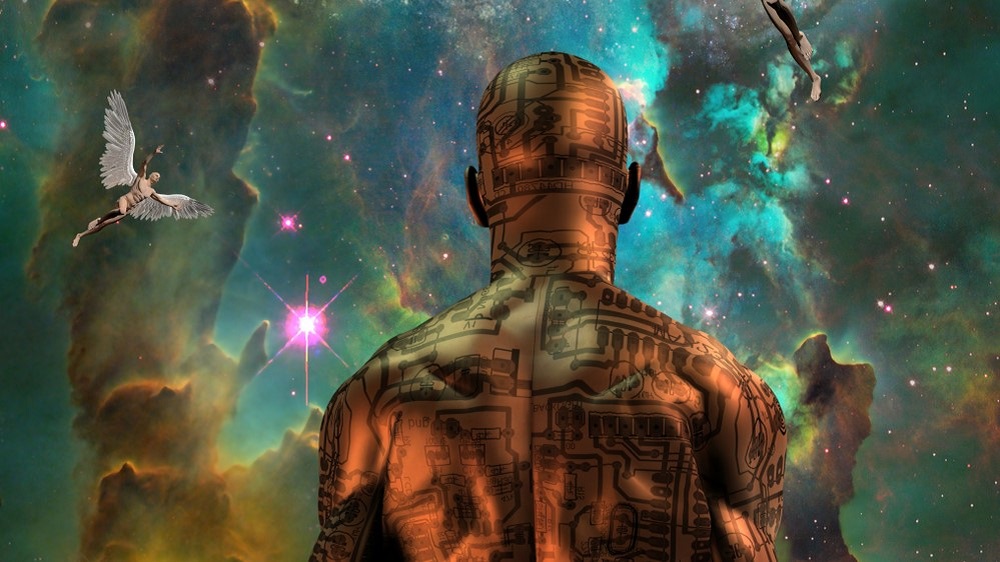I stumbled across two news bits of interest from the Technical University of Munich in one day (Sept. 1, 2020, I think). The topics: artificial intelligence (AI) and synthetic DNA (deoxyribonucleic acid).
Embedded ethics and artificial intelligence (AI)
An August 27, 2020 Technical University of Munich (TUM) press release (also on EurekAlert but published Sept. 1, 2020) features information about a proposal to embed ethicists in with AI development teams,
The increasing use of AI (artificial intelligence) in the development of new medical technologies demands greater attention to ethical aspects. An interdisciplinary team at the Technical University of Munich (TUM) advocates the integration of ethics from the very beginning of the development process of new technologies. Alena Buyx, Professor of Ethics in Medicine and Health Technologies, explains the embedded ethics approach.
Professor Buyx, the discussions surrounding a greater emphasis on ethics in AI research have greatly intensified in recent years, to the point where one might speak of “ethics hype” …
Prof. Buyx: … and many committees in Germany and around the world such as the German Ethics Council or the EU Commission High-Level Expert Group on Artificial Intelligence have responded. They are all in agreement: We need more ethics in the development of AI-based health technologies. But how do things look in practice for engineers and designers? Concrete solutions are still few and far between. In a joint pilot project with two Integrative Research Centers at TUM, the Munich School of Robotics and Machine Intelligence (MSRM) with its director, Prof. Sami Haddadin, and the Munich Center for Technology in Society (MCTS), with Prof. Ruth Müller, we want to try out the embedded ethics approach. We published the proposal in Nature Machine Intelligence at the end of July [2020].
What exactly is meant by the “embedded ethics approach”?
Prof.Buyx: The idea is to make ethics an integral part of the research process by integrating ethicists into the AI development team from day one. For example, they attend team meetings on a regular basis and create a sort of “ethical awareness” for certain issues. They also raise and analyze specific ethical and social issues.
Is there an example of this concept in practice?
Prof. Buyx: The Geriatronics Research Center, a flagship project of the MSRM in Garmisch-Partenkirchen, is developing robot assistants to enable people to live independently in old age. The center’s initiatives will include the construction of model apartments designed to try out residential concepts where seniors share their living space with robots. At a joint meeting with the participating engineers, it was noted that the idea of using an open concept layout everywhere in the units – with few doors or individual rooms – would give the robots considerable range of motion. With the seniors, however, this living concept could prove upsetting because they are used to having private spaces. At the outset, the engineers had not given explicit consideration to this aspect.
Prof.Buyx: The approach sounds promising. But how can we avoid “embedded ethics” from turning into an “ethics washing” exercise, offering companies a comforting sense of “being on the safe side” when developing new AI technologies?
That’s not something we can be certain of avoiding. The key is mutual openness and a willingness to listen, with the goal of finding a common language – and subsequently being prepared to effectively implement the ethical aspects. At TUM we are ideally positioned to achieve this. Prof. Sami Haddadin, the director of the MSRM, is also a member of the EU High-Level Group of Artificial Intelligence. In his research, he is guided by the concept of human centered engineering. Consequently, he has supported the idea of embedded ethics from the very beginning. But one thing is certain: Embedded ethics alone will not suddenly make AI “turn ethical”. Ultimately, that will require laws, codes of conduct and possibly state incentives.
Here’s a link to and a citation for the paper espousing the embedded ethics for AI development approach,
An embedded ethics approach for AI development by Stuart McLennan, Amelia Fiske, Leo Anthony Celi, Ruth Müller, Jan Harder, Konstantin Ritt, Sami Haddadin & Alena Buyx. Nature Machine Intelligence (2020) DOI: https://doi.org/10.1038/s42256-020-0214-1 Published 31 July 2020
This paper is behind a paywall.
Religion, ethics and and AI
For some reason embedded ethics and AI got me to thinking about Pope Francis and other religious leaders.
The Roman Catholic Church and AI
There was a recent announcement that the Roman Catholic Church will be working with MicroSoft and IBM on AI and ethics (from a February 28, 2020 article by Jen Copestake for British Broadcasting Corporation (BBC) news online (Note: A link has been removed),
Leaders from the two tech giants met senior church officials in Rome, and agreed to collaborate on “human-centred” ways of designing AI.
Microsoft president Brad Smith admitted some people may “think of us as strange bedfellows” at the signing event.
“But I think the world needs people from different places to come together,” he said.
The call was supported by Pope Francis, in his first detailed remarks about the impact of artificial intelligence on humanity.
The Rome Call for Ethics [sic] was co-signed by Mr Smith, IBM executive vice-president John Kelly and president of the Pontifical Academy for Life Archbishop Vincenzo Paglia.
It puts humans at the centre of new technologies, asking for AI to be designed with a focus on the good of the environment and “our common and shared home and of its human inhabitants”.
Framing the current era as a “renAIssance”, the speakers said the invention of artificial intelligence would be as significant to human development as the invention of the printing press or combustion engine.
UN Food and Agricultural Organization director Qu Dongyu and Italy’s technology minister Paola Pisano were also co-signatories.
…
Hannah Brockhaus’s February 28, 2020 article for the Catholic News Agency provides some details missing from the BBC report and I found it quite helpful when trying to understand the various pieces that make up this initiative,
The Pontifical Academy for Life signed Friday [February 28, 2020], alongside presidents of IBM and Microsoft, a call for ethical and responsible use of artificial intelligence technologies.
According to the document, “the sponsors of the call express their desire to work together, in this context and at a national and international level, to promote ‘algor-ethics.’”
“Algor-ethics,” according to the text, is the ethical use of artificial intelligence according to the principles of transparency, inclusion, responsibility, impartiality, reliability, security, and privacy.
The signing of the “Rome Call for AI Ethics [PDF]” took place as part of the 2020 assembly of the Pontifical Academy for Life, which was held Feb. 26-28 [2020] on the theme of artificial intelligence.
One part of the assembly was dedicated to private meetings of the academics of the Pontifical Academy for Life. The second was a workshop on AI and ethics that drew 356 participants from 41 countries.
On the morning of Feb. 28 [2020], a public event took place called “renAIssance. For a Humanistic Artificial Intelligence” and included the signing of the AI document by Microsoft President Brad Smith, and IBM Executive Vice-president John Kelly III.
The Director General of FAO, Dongyu Qu, and politician Paola Pisano, representing the Italian government, also signed.
The president of the European Parliament, David Sassoli, was also present Feb. 28.
Pope Francis canceled his scheduled appearance at the event due to feeling unwell. His prepared remarks were read by Archbishop Vincenzo Paglia, president of the Academy for Life.
…
You can find Pope Francis’s comments about the document here (if you’re not comfortable reading Italian, hopefully, the English translation which follows directly afterward will be helpful). The Pope’s AI initiative has a dedicated website, Rome Call for AI ethics, and while most of the material dates from the February 2020 announcement, they are keeping up a blog. It has two entries, one dated in May 2020 and another in September 2020.
Buddhism and AI
The Dalai Lama is well known for having an interest in science and having hosted scientists for various dialogues. So, I was able to track down a November 10, 2016 article by Ariel Conn for the futureoflife.org website, which features his insights on the matter,
…
The question of what it means and what it takes to feel needed is an important problem for ethicists and philosophers, but it may be just as important for AI researchers to consider. The Dalai Lama argues that lack of meaning and purpose in one’s work increases frustration and dissatisfaction among even those who are gainfully employed.
“The problem,” says the Dalai Lama, “is … the growing number of people who feel they are no longer useful, no longer needed, no longer one with their societies. … Feeling superfluous is a blow to the human spirit. It leads to social isolation and emotional pain, and creates the conditions for negative emotions to take root.”
If feeling needed and feeling useful are necessary for happiness, then AI researchers may face a conundrum. Many researchers hope that job loss due to artificial intelligence and automation could, in the end, provide people with more leisure time to pursue enjoyable activities. But if the key to happiness is feeling useful and needed, then a society without work could be just as emotionally challenging as today’s career-based societies, and possibly worse.
…
I also found a talk on the topic by The Venerable Tenzin Priyadarshi, first here’s a description from his bio at the Dalai Lama Center for Ethics and Transformative Values webspace on the Massachusetts Institute of Technology (MIT) website,
… an innovative thinker, philosopher, educator and a polymath monk. He is Director of the Ethics Initiative at the MIT Media Lab and President & CEO of The Dalai Lama Center for Ethics and Transformative Values at the Massachusetts Institute of Technology. Venerable Tenzin’s unusual background encompasses entering a Buddhist monastery at the age of ten and receiving graduate education at Harvard University with degrees ranging from Philosophy to Physics to International Relations. He is a Tribeca Disruptive Fellow and a Fellow at the Center for Advanced Study in Behavioral Sciences at Stanford University. Venerable Tenzin serves on the boards of a number of academic, humanitarian, and religious organizations. He is the recipient of several recognitions and awards and received Harvard’s Distinguished Alumni Honors for his visionary contributions to humanity.
He gave the 2018 Roger W. Heyns Lecture in Religion and Society at Stanford University on the topic, “Religious and Ethical Dimensions of Artificial Intelligence.” The video runs over one hour but he is a sprightly speaker (in comparison to other Buddhist speakers I’ve listened to over the years).
Judaism, Islam, and other Abrahamic faiths examine AI and ethics
I was delighted to find this January 30, 2020 Artificial Intelligence: Implications for Ethics and Religion event as it brought together a range of thinkers from various faiths and disciplines,
New technologies are transforming our world every day, and the pace of change is only accelerating. In coming years, human beings will create machines capable of out-thinking us and potentially taking on such uniquely-human traits as empathy, ethical reasoning, perhaps even consciousness. This will have profound implications for virtually every human activity, as well as the meaning we impart to life and creation themselves. This conference will provide an introduction for non-specialists to Artificial Intelligence (AI):
What is it? What can it do and be used for? And what will be its implications for choice and free will; economics and worklife; surveillance economies and surveillance states; the changing nature of facts and truth; and the comparative intelligence and capabilities of humans and machines in the future?
Leading practitioners, ethicists and theologians will provide cross-disciplinary and cross-denominational perspectives on such challenges as technology addiction, inherent biases and resulting inequalities, the ethics of creating destructive technologies and of turning decision-making over to machines from self-driving cars to “autonomous weapons” systems in warfare, and how we should treat the suffering of “feeling” machines. The conference ultimately will address how we think about our place in the universe and what this means for both religious thought and theological institutions themselves.
UTS [Union Theological Seminary] is the oldest independent seminary in the United States and has long been known as a bastion of progressive Christian scholarship. JTS [Jewish Theological Seminary] is one of the academic and spiritual centers of Conservative Judaism and a major center for academic scholarship in Jewish studies. The Riverside Church is an interdenominational, interracial, international, open, welcoming, and affirming church and congregation that has served as a focal point of global and national activism for peace and social justice since its inception and continues to serve God through word and public witness. The annual Greater Good Gathering, the following week at Columbia University’s School of International & Public Affairs, focuses on how technology is changing society, politics and the economy – part of a growing nationwide effort to advance conversations promoting the “greater good.”
They have embedded a video of the event (it runs a little over seven hours) on the January 30, 2020 Artificial Intelligence: Implications for Ethics and Religion event page. For anyone who finds that a daunting amount of information, you may want to check out the speaker list for ideas about who might be writing and thinking on this topic.
As for Islam, I did track down this November 29, 2018 article by Shahino Mah Abdullah, a fellow at the Institute of Advanced Islamic Studies (IAIS) Malaysia,
…
As the global community continues to work together on the ethics of AI, there are still vast opportunities to offer ethical inputs, including the ethical principles based on Islamic teachings.
This is in line with Islam’s encouragement for its believers to convey beneficial messages, including to share its ethical principles with society.
In Islam, ethics or akhlak (virtuous character traits) in Arabic, is sometimes employed interchangeably in the Arabic language with adab, which means the manner, attitude, behaviour, and etiquette of putting things in their proper places. Islamic ethics cover all the legal concepts ranging from syariah (Islamic law), fiqh ( jurisprudence), qanun (ordinance), and ‘urf (customary practices).
Adopting and applying moral values based on the Islamic ethical concept or applied Islamic ethics could be a way to address various issues in today’s societies.
At the same time, this approach is in line with the higher objectives of syariah (maqasid alsyariah) that is aimed at conserving human benefit by the protection of human values, including faith (hifz al-din), life (hifz alnafs), lineage (hifz al-nasl), intellect (hifz al-‘aql), and property (hifz al-mal). This approach could be very helpful to address contemporary issues, including those related to the rise of AI and intelligent robots.
..
Part of the difficulty with tracking down more about AI, ethics, and various religions is linguistic. I simply don’t have the language skills to search for the commentaries and, even in English, I may not have the best or most appropriate search terms.
Television (TV) episodes stored on DNA?
According to a Sept. 1, 2020 news item on Nanowerk, the first episode of a tv series, ‘Biohackers’ has been stored on synthetic DNA (deoxyribonucleic acid) by a researcher at TUM and colleagues at another institution,
The first episode of the newly released series “Biohackers” was stored in the form of synthetic DNA. This was made possible by the research of Prof. Reinhard Heckel of the Technical University of Munich (TUM) and his colleague Prof. Robert Grass of ETH Zürich.
They have developed a method that permits the stable storage of large quantities of data on DNA for over 1000 years.
A Sept. 1, 2020 TUM press release, which originated the news item, proceeds with more detail in an interview format,
Prof. Heckel, Biohackers is about a medical student seeking revenge on a professor with a dark past – and the manipulation of DNA with biotechnology tools. You were commissioned to store the series on DNA. How does that work?
First, I should mention that what we’re talking about is artificially generated – in other words, synthetic – DNA. DNA consists of four building blocks: the nucleotides adenine (A), thymine (T), guanine (G) and cytosine (C). Computer data, meanwhile, are coded as zeros and ones. The first episode of Biohackers consists of a sequence of around 600 million zeros and ones. To code the sequence 01 01 11 00 in DNA, for example, we decide which number combinations will correspond to which letters. For example: 00 is A, 01 is C, 10 is G and 11 is T. Our example then produces the DNA sequence CCTA. Using this principle of DNA data storage, we have stored the first episode of the series on DNA.
And to view the series – is it just a matter of “reverse translation” of the letters?
In a very simplified sense, you can visualize it like that. When writing, storing and reading the DNA, however, errors occur. If these errors are not corrected, the data stored on the DNA will be lost. To solve the problem, I have developed an algorithm based on channel coding. This method involves correcting errors that take place during information transfers. The underlying idea is to add redundancy to the data. Think of language: When we read or hear a word with missing or incorrect letters, the computing power of our brain is still capable of understanding the word. The algorithm follows the same principle: It encodes the data with sufficient redundancy to ensure that even highly inaccurate data can be restored later.
Channel coding is used in many fields, including in telecommunications. What challenges did you face when developing your solution?
The first challenge was to create an algorithm specifically geared to the errors that occur in DNA. The second one was to make the algorithm so efficient that the largest possible quantities of data can be stored on the smallest possible quantity of DNA, so that only the absolutely necessary amount of redundancy is added. We demonstrated that our algorithm is optimized in that sense.
DNA data storage is very expensive because of the complexity of DNA production as well as the reading process. What makes DNA an attractive storage medium despite these challenges?
First, DNA has a very high information density. This permits the storage of enormous data volumes in a minimal space. In the case of the TV series, we stored “only” 100 megabytes on a picogram – or a billionth of a gram of DNA. Theoretically, however, it would be possible to store up to 200 exabytes on one gram of DNA. And DNA lasts a long time. By comparison: If you never turned on your PC or wrote data to the hard disk it contains, the data would disappear after a couple of years. By contrast, DNA can remain stable for many thousands of years if it is packed right.
And the method you have developed also makes the DNA strands durable – practically indestructible.
My colleague Robert Grass was the first to develop a process for the “stable packing” of DNA strands by encapsulating them in nanometer-scale spheres made of silica glass. This ensures that the DNA is protected against mechanical influences. In a joint paper in 2015, we presented the first robust DNA data storage concept with our algorithm and the encapsulation process developed by Prof. Grass. Since then we have continuously improved our method. In our most recent publication in Nature Protocols of January 2020, we passed on what we have learned.
What are your next steps? Does data storage on DNA have a future?
We’re working on a way to make DNA data storage cheaper and faster. “Biohackers” was a milestone en route to commercialization. But we still have a long way to go. If this technology proves successful, big things will be possible. Entire libraries, all movies, photos, music and knowledge of every kind – provided it can be represented in the form of data – could be stored on DNA and would thus be available to humanity for eternity.
Here’s a link to and a citation for the paper,
Reading and writing digital data in DNA by Linda C. Meiser, Philipp L. Antkowiak, Julian Koch, Weida D. Chen, A. Xavier Kohll, Wendelin J. Stark, Reinhard Heckel & Robert N. Grass. Nature Protocols volume 15, pages86–101(2020) Issue Date: January 2020 DOI: https://doi.org/10.1038/s41596-019-0244-5 Published [online] 29 November 2019
This paper is behind a paywall.
As for ‘Biohackers’, it’s a German science fiction television series and you can find out more about it here on the Internet Movie Database.
